Countless inventors are stepping up to the plate with the latest and greatest green technologies that will save the planet. This is great to see, but the waters of sensible change will no doubt be muddied along the way by some failed attempts, some questionable claims, and perhaps even a little snake oil!
We found the PowerPod compact home wind turbine on a Kickstarter campaign, which looks great in principle, but having seen a few home wind turbines in the past that failed to deliver on their promises, we thought it potentially looked a little too great. Created by a company in Salt Lake City, Utah named Halcium, the company is hopeful that the Powerpod will be a game changer in home renewable energy generation - which we are all for if this were to prove itself.
Are small domestic wind turbines any good?
The makers of the PowerPod compact domestic wind turbine on Kickstarter claim that "for places that get less than 300 days of sun a year, a PowerPod could produce more power, for less money than solar panels" which really did make us wonder, as there are so many variables in play that we don't see how that can always be true.
Important in that claim is the 'could', so Ecohome's engineers decided to run some figures of their own just to see if this claim looks plausible. Perhaps this 'could' be true in some places, but it's also a bit of an overreach in our opinion and it’s certainly the first of several eyebrow-raising claims that prompted us to dig deeper.
Installing solar panels in areas of shade, or areas that see a lot of cloudy days will for sure affect the return on investment time, but a lack of sun does not instantly equate to a healthy supply of wind either, at least that's what our engineers reasoned.
And more importantly, wind speed at low altitudes has proven to be relatively limited. therefore in their opinion (our number crunchers), the turbine would have to be installed about 100 feet above any surrounding obstacles to optimize performance, despite the +40% claim on efficiency due to this funky design. The wind turbines we have seen that aren't just anecdotal and where someone is serious about harvesting wind power, are generally seated on a tower or pole way above any obstructions in close proximity.

Another advantage the manufacturers promote for their compact domestic wind turbine is that it is safer for children. True, but if it’s sitting at ground level in your fenced-in backyard where children play, then the limitations of any wind turbine set in, which is reduced wind speed on the ground compared to one placed higher in the air that isn't slowed by buildings and trees. So, it’s ‘safe for kids’ if you put it in a location where it won’t work very well. That would be something like advertising a set of kitchen knives as being ‘kid safe’, because they are too dull to cut anything.
Do vertical axis wind turbines work better?
There are a family of ‘alternative’ vertical axis wind turbine designs that use rotary blades like this, the Zoetrope wind turbine is another example. Vertical axis turbines like this have for the most part turned out to be duds.
We asked Ecohome Engineer Denis Boyer to weigh in and he had the following to share:
The PowerPod promotional video claims that the air velocity is increased by 33% as it funnels through the intake. I suppose they have made some calculations to back that up, however, they go on to claim that their design will provide 3 times (300%) as much power as a regular turbine, but that it is not what we’ve concluded.
If we suppose that all the air hitting the surface actually makes it to the turbine (which it will not!), it can be shown that the power delivered would be no more than 1.8 times (or 80%) compared to a standard turbine. But there would likely be a lot of turbulence which would cause a good portion of the incoming air to be deflected, which then won’t participate in the energy production. Therefore, the actual power produced would likely be much less than this 80% increase.
So, overall there is some doubt on our end that this device can actually deliver on its promises and outperform solar panels in most regions of the country.
What is the return on investment time for a PowerPod turbine?
What is really needed to keep skeptics like us at bay, would be some actual data we can dig our teeth into regarding performance and cost. That would also permit us the opportunity to stand behind this thing with confidence if it really works as they claim. For example - were the company to run a test for a month or so in a particular city (or better yet multiple cities), with a turbine placed at a proper height, and measure the energy collected, it would give some idea of what it can actually deliver.
That way homeowners would know, in terms of cold hard cash, how much of their energy costs based on local utility rates that could be offset by such a purchase. If it produced enough power to pay for itself in 4-5 years and it had an estimated lifespan of 20 years, then we’ll go buy some ourselves. But if it takes 40 years to pay it off, then you’re better off with the solar panels this thing is trying to compete with. It’s important to put tangible figures to these things if they are to take hold in the market.
It’s great to see innovators stepping up with new ideas, but they won't all be game changers. In our opinion, while this one looks cool, it likely isn’t the magic bullet that the world needs. But we're prepared to be proven wrong, so Halcium engineers, if you're listening, make your case!
And to our awesome readers, one of which pointed this out to us - if you spot any other cool ideas billed as 'green technologies that will save the planet", please comment below and we might look into it!
Now you know more about small domestic wind turbines, learn more about sustainable home comfort, energy efficiency and how to reduce the carbon footprint of homes on the following pages and in the Ecohome Green Building Guide.
Find more about green home construction and reap the benefits of a free Ecohome Network Membership here. |






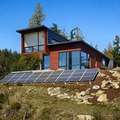















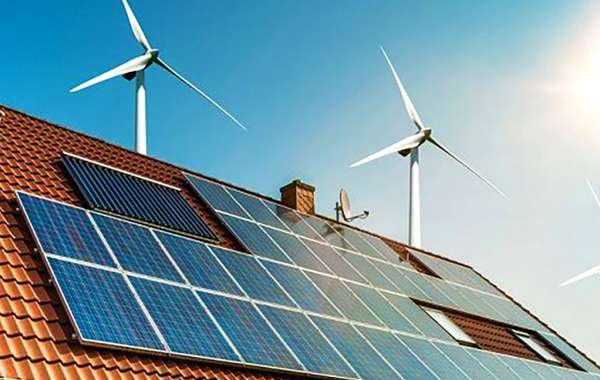


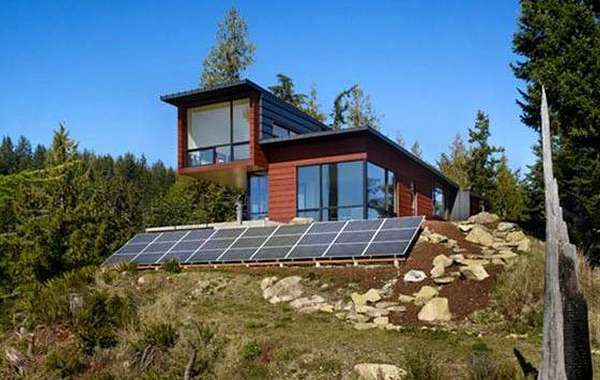
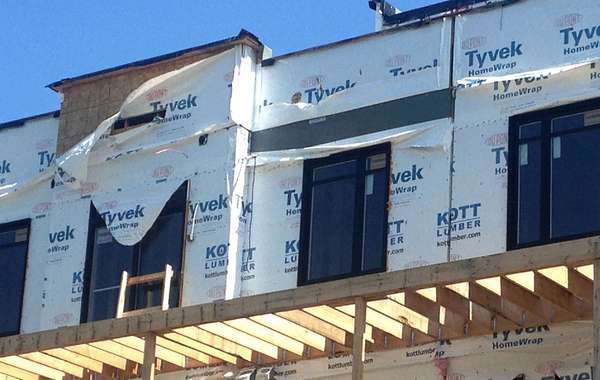
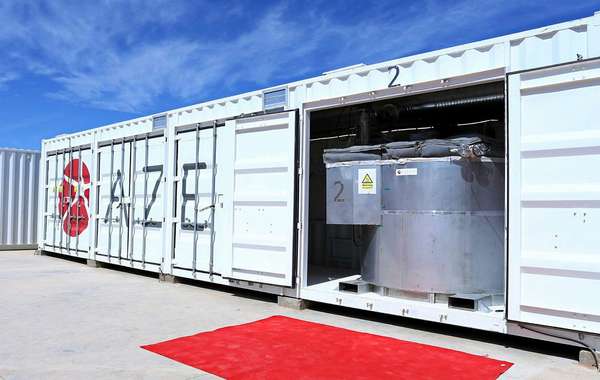
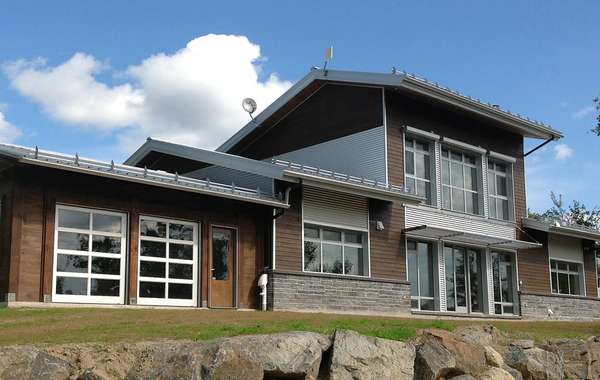

There is any test in wind tunnels to certify the Power Por efficiency? If not, for me, it's another bust.
your so governmental in your accusations! let me give you some insight to not so stringent thinking . for my situation nothing , and i mean NOTHING fills my needs for saftey and convinience . then you COMPARE apples to oranges. i could use one of those on the side of my house that the wind blows the surface clean. i live in a desert in a south facing home on the top of a valley. everyday the wind blows!
about your last statement on 'saving the world' . there is one thing in and of it's self NOT ONLY SAVE THE EARTH IT WILL BRING NUTRIENT DENSE FOOD AND REGENERATE HUMAN HEALTH ! i must be loco? ! ? ! it's not me but biologist /scientist and farmers that have been open soursing the procedings. they just went to congress to tell them[FDA] to step off and let the mango thru .
Imagine if a company built a 10 story structure (like a parking lot) and just put literally thousands of units on a network and there was some notification of a unit that needed to be serviced so a tech can go to the right unit to fix/replace? You could power a lot of homes with that type of system. Basically a new generation wind farm. Sky's the limit with this type of unit of various sizes.
............................what?
Air doesn't care to force itself into small holes. The air will form a buffer in front of the pod and flow around. Can't work
nonesense. I'll bet those things work well as it's forces the air into the unit..
hi guys! have you seen the flower turbines? they looks pretty cool
As with any device, the value is a factor of many things.
Efficientcy is one, environmental impact (in manufacturing, use, and end-of-life,) another--as well as aesthetics, costs.
They estimate the efficiency, and you estimate efficiency but lacking actual data. no one knows.
Bog windmills have a solution for their bird problem, but sonic issues continue.
Big windmills are designed by and for utility's to preserve their current monopoly on power.
These companies don't want dispersed power generation--they are focused almost entirely on profit, and a great deal off their profits come from charging small users far more than industrial users.
Merely making the cost per KWh the same across customers would force large users to find ways to reduce their usage or produce their own power.
Until we rein in those whose sole goal is profit, environmental problems will continue to increase.
As our weather becomes ever wilder, there will be fewer locations which can depend upon only one source of energy.
Mathematically speaking, and after testing, it has been found that vertical axis windmills simply do not produce the same amount of power under the same conditions. Not all inventions need a prototype and someone standing beside it with a clip board to measure its efficacy when there is sufficient relevant data available.
If you want an alternative small scale power solution to redude the monopoly of large utilities then why would you not use the most effective technologies?
But you can put a lot of these things in a relatively small area and stack them up in a multi story parking lot structure. Those large wind mills you have to spread them apart.. At least these things won't kill birds, and would be far more accessible for servicing. A power company could just buy a bunch of them, put them on a network for monitoring them and alerting a tech to service them as needed... They could make these things at different sizes.. I think it's very promising design..
Stupid question... If these really do work then why not put them to work on the interstate. We have land available or space available between traffic. Even when the wind isn't blowing, the traffic is moving the air. Has anyone thought of trying that?
I don't think that's a stupid question, This just isn't the right product for the job. If you're going to manufacture any product with an end goal in mind, like generating power, your product design should be the most efficient possible, which is not this. You could in theory line every interstate with wind, or solar, or at the least have small individual solar panels on the top of each light so it generates its own power.
I definitely think that this idea has great potential. If my backyard had these beautiful structures harnessing energy while they blow in the wind all day long why wouldn't everyone want one?
As a decoration, sure why not. But technologically speaking, and if you're looking to generate power, it's a step backwards. It's like 're-inventing the wheel' and making it octogonal or something when round wheels are clearly more efficient.
I wonder how many one would need to power one's home? If the average home needed 10 of them, then maybe not, but if the average home only needed a couple of units, then I'm sure power companies could build multistory farms to power small cities if they are in an area with lots of high wind. Sure, they aren't going to solve the entire power problem, but it's a mix of wind, solar, and water power that can eventually remove the need for coal/oil power....
It would take way more than ten of these to power the average home David. And again, this is an inferior technology so if you were going to buy a bunch of mini windmills to put on your roof in hopes of powering your home, I think most people would choose the most efficient design. If someone came up with an 'alternative' solar panel that produced less power I really can't see anyone taking them seriously. I think it's happening here because this thing is cute.
I was following up this Saga for a long time, the company is just a scam, it's literally 1 guy asking for millions of dollars but he can't find a few hundreds to get a inverter to test his prototype in 3 years...
He has this same wobbly prototype on this same condition for over 4 years and never shares the real energy generation for a simple reason it's all baseless claims that are stupidly far from reality and the guy behind it knows it it's all a scam..
You can assume that just checking the physics of it, changing orientation of the wind you will lose an absurd amount of energy, and on vertical you ate fighting even more against gravity, not only that but he also funnels it to the tip that will make you lose energy again.
Now comes the most idiotic take that is the tip of the blade is the most efficient, that's complete BS, not only you lost a lot of energy redirecting wind twice but you are running a turbine only by the tip which by lever physics rule would be less efficient than driving the whole blade of a normal wind turbine...
This product is physically impossible to be more efficient than any products that already exist that use the wind on its original direction to generate energy..
Vaporware to steal dumb people's money..
I sent that company a simple question, Had they ever heard of Bernoulli's Theorem ? No answer !!!!. I see no evidence of it in the design of the Powerpod
I totally agree that some numbers would be great. But I also suggest that not every application is the same. Solar panels vs. wind turbines might be simply a design choice. In that case, for anyone who likes the style of having a turbine on their home, more power to ya! And one other big issue I have with a comment in the article is this: If anyone wants renewable energy from a device they buy and it has a payback period of less than infinity (ok, 10 years or so) then they are buying something better than paying a never-ending electric bill to the fossil fuel emissions generating utility company and they aren't producing the emissions. Compariing infinite payments with an arbitrary payback period as if 4-5 years is "worth it" and 10 years is not; well that's not the case. Both renewable energy solutions are totally better than fossil fuel sources with never-ending bills. Don't you agree?
We don't dissagree with your overall opinion between renewables and fossil fuels, but we think if you're going to commit a financial investment towards saving energy and money, then it makes sense to go with a design that works well and has the best return on investment. If you are car shopping and a large conceptual difference in design means one type is more efficient than another, would you not go with the one that has that offers you the most savings - financially and ecologically?
Our only point is that this new design does not provide as much power as the old design. If you like the look of it as a type of whirly-gig sculpture for your yard then for sure buy it, it's way better than a sculpture that doesn't generate power, but if your intention is primarily to generate home renewavble energy then a vertical axis turbine is the way to go.
Hi guys,
I’m Ion, an engineer from Romania. As I’ve seen a comment above related to Power pod, it is right, the air doesn’t force itself trough the Powerpod entirely. It forms a pressure front with increased density and the amount of speed increase depends of the angle and shape of “air entrance” . However, “forcing” the air to an increased density front, might have some benefits especially for the turbines placed on the roofs in an angle. The wind lines tend to follow the shape of the object on their way and increase density towards the ridge top of the roof. If captured correctly and use an efficient blade, this can bring real benefits. The limitation is that the wind needs to blow perpendicular to the ridge or close to, depends of the pyramid looking like.
Here, in our company we are still designing based on this idea and open to any suggestions.
We don't allow company links in comments Ion so I had to remove it, but thanks for sharing your thoughts. If you have calculations to share that show something different than what our engineers calculated we would love to take a look. It just seems a gimmick for aesthetic appeal and to stand out, and with a lower power output. But we are always happy to be corrected so please feel free to included calculations, just not links.
Thanks Mike,
We are just in the development phase. There are too many things to be taken into consideration here. One thing is for sure, capturing and redirecting the wind can have benefits.
If you would like I can keep you posted with our work in this case.
All the best,
Ion
Sounds good Ion, if you develop a product that you can show produces the power it claims we would be pleased to cover it. Good luck, we do hope it succeeds as planned.
any updates?
Due to the Covid thing we've stoped, just now we are getting back to it!
Keep you updated and wait fro noews from you if there are any,...